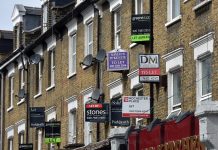James Kelly, Chief Executive at the British Security Industry Association (BSIA) outlines why CCTV remains a crucial pillar to public safety and highlights the importance of implementing standards across the sector as a whole
With between 4 million and 5.9 million CCTV surveillance cameras in the UK alone, the CCTV industry, both in the UK and globally, is one of the largest sectors within the security landscape. The application of CCTV is wide-ranging and, as such, is constantly changing and improving in order to keep up with the requirements of modern-day society. It is not just understandable to question the function of CCTV cameras in the UK in order to ensure that cameras are being utilised correctly for their intended purpose – it is essential.
Crime detection
In terms of crime detection, CCTV cameras are unrivalled in their ability to gather real-time intelligence instantly throughout a designated area – not only facilitating speedy responses from the police but securing much-needed convictions in court. Similarly, CCTV cameras in the UK also serve to save money for the public purse; in court, criminals are much more likely to plead guilty when faced by the undeniable evidence of being caught on camera.
According to Hugh Marriage, former Home Office Crime Reduction Officer for the south-east of England, “A court hearing with a guilty verdict saves around £3,000 to £5,000 and CCTV pictures mean there has been an enormous increase in guilty verdicts.”1 Indeed, in 2010 alone, the Met Police stated that 1 in 6 crimes are solved thanks to CCTV solutions.
While CCTV cameras have the ability to aid convictions in this way, it is important that they are installed and maintained properly in order to ensure that they are not badly positioned, out of focus, broken, or simply outdated and providing poor quality images. As Professor Laycock from the Jill Dando Institute of Crime Science at University College London comments, “It depends on what cameras are being used for and if they are maintained properly.”2
The importance of Standards
Speaking in more detail about the current CCTV standards climate, Simon Adcock, Chairman of the BSIA’s CCTV section commented, “In 2012, the Protection of Freedoms Act3 formalised the government’s intention to drive CCTV best practice forward.
“The CCTV Code of Practice4 – made up of 12 guiding principles – aimed to define best practice in a way wherein public protection was paramount. While the Code of Practice was undoubtedly a ‘step in the right direction’, it is flawed.
“Presently, the Code of Practice only extends to publicly-owned systems. However, the private sector is a key player in the CCTV arena; only 1 out of every 70 CCTV cameras in use are publicly owned, according to BSIA research released last year. The majority of CCTV cameras in the UK are privately owned and, as such, do not fall under the remit of the current code of practice dictated by government.
“Logically, the next step for the current CCTV Code of Practice is the application of its 12 guiding principles to cover privately-owned systems. Not only do they form the majority of CCTV coverage in the UK, they are also responsible for providing significant evidence to Police.”
Promoting Community Safety
As Simon highlights, research conducted by the BSIA in 2013 suggested that only 1 out of every 70 CCTV cameras is owned by public bodies. Despite this, both publically and privately owned cameras have the potential to promote community safety. For example, CCTV operators often contact medical services if they see people in the street suffering from illness of injury, as a result of criminal activity or otherwise. In fact, Squires (2000)5 found that police are called on average 10 to 20 times for every 700 hours of observation.
Given the lack of resources available to the police, achieving these levels of detection would be impossible through patrolling alone. Aside from the fact this would require considerably more manpower; most members of the public would agree that CCTV cameras are preferable to an increased police presence, which could appear overbearing. In fact, one particular study (Brown6) found that police commanders believed that assaults on police had been reduced due to cameras allowing them to determine the appropriate level of response to an incident – either by sending more officers where necessary, or by limiting the number of officers to a minor incident to avoid inadvertently inflaming the situation.
Beyond crime, cameras can be used for other purposes to help the public, such as aiding in the search for lost children, monitoring traffic flow and providing updates or to determine if alarms have been activated unnecessarily. Camera footage can also help identify potential witnesses who might not otherwise realise that they could be vital to an investigation.
The surveillance state myth
To conclude, despite a certain level of scaremongering from the press, the strong CCTV presence in the UK should not be viewed negatively. Indeed the significant number of CCTV cameras in operation are privately owned, rather than state-owned. Despite this, communication between CCTV control room staff and the police presents major benefits for law abiding citizens in terms of ensuring their safety on a day to day basis, as well as presenting assurance that in the event of them falling victim to opportunist criminals, the likelihood of those responsible being convicted is much more likely. Looking to the future, it is crucial that adequate standards are adopted across the entire CCTV sector in order to cement these benefits. The British Security Industry Association is the trade association for the private security industry in the UK. Our members provide over 70% of UK security products and services and adhere to strict quality standards.
For more information, visit the BSIA’s website at www.bsia.co.uk.
1 http://news.bbc.co.uk/1/hi/uk/2071496.stm
2 ibid.,
3 http://www.legislation.gov.uk/ukpga/2012/9/contents/enacted
4 https://ico.org.uk/media/for-organisations/documents/1542/cctv-code-of-practice.pdf
5 http://www.petersquires.net/wp-content/uploads/2013/02/CCTV_and_crime_reduction_in_Crawley.pdf
6 http://www.popcenter.org/responses/video_surveillance/pdfs/brown_1995_full.pdf
James Kelly
Chief Executive
the British Security Industry Association (BSIA)










